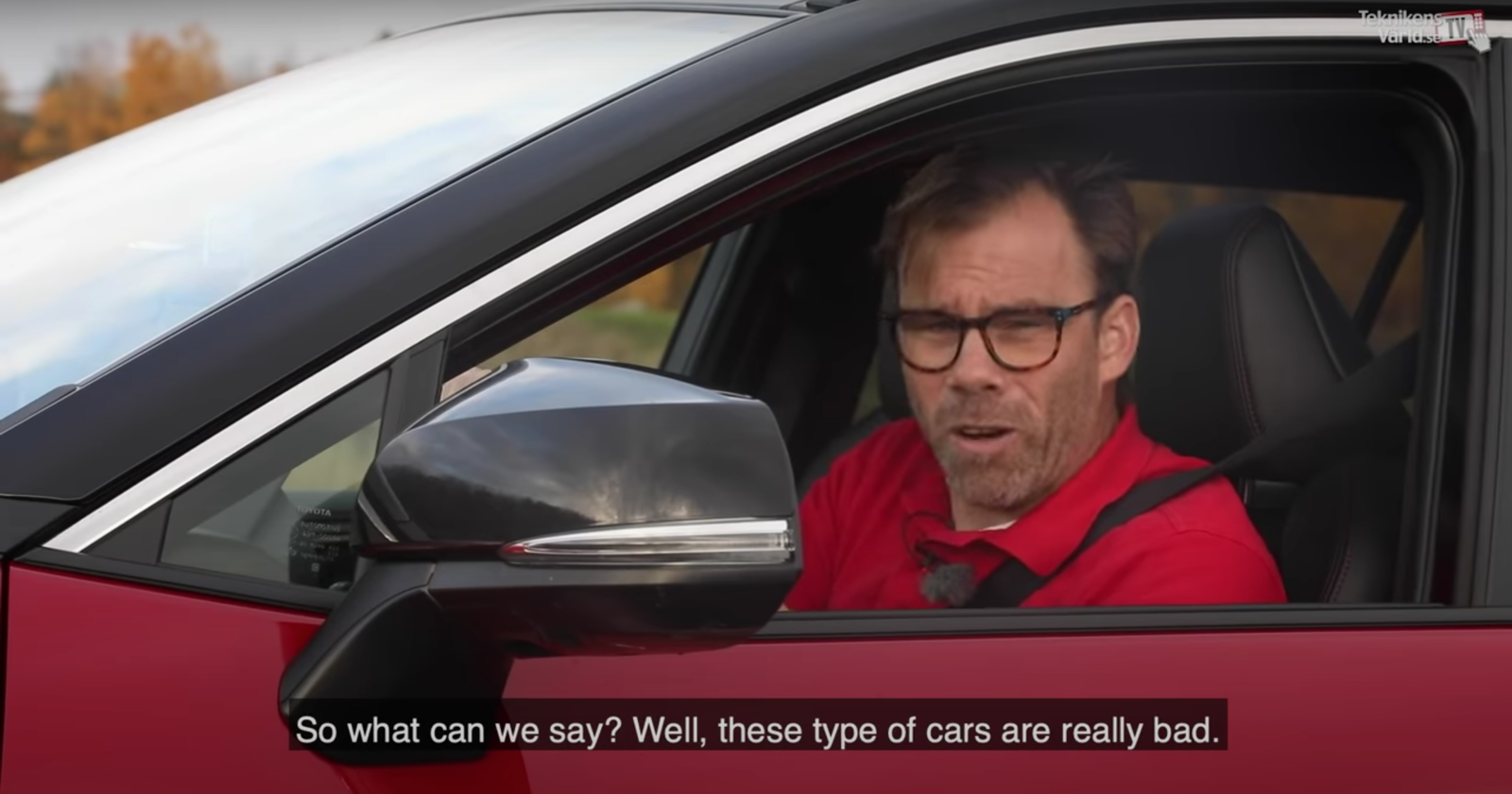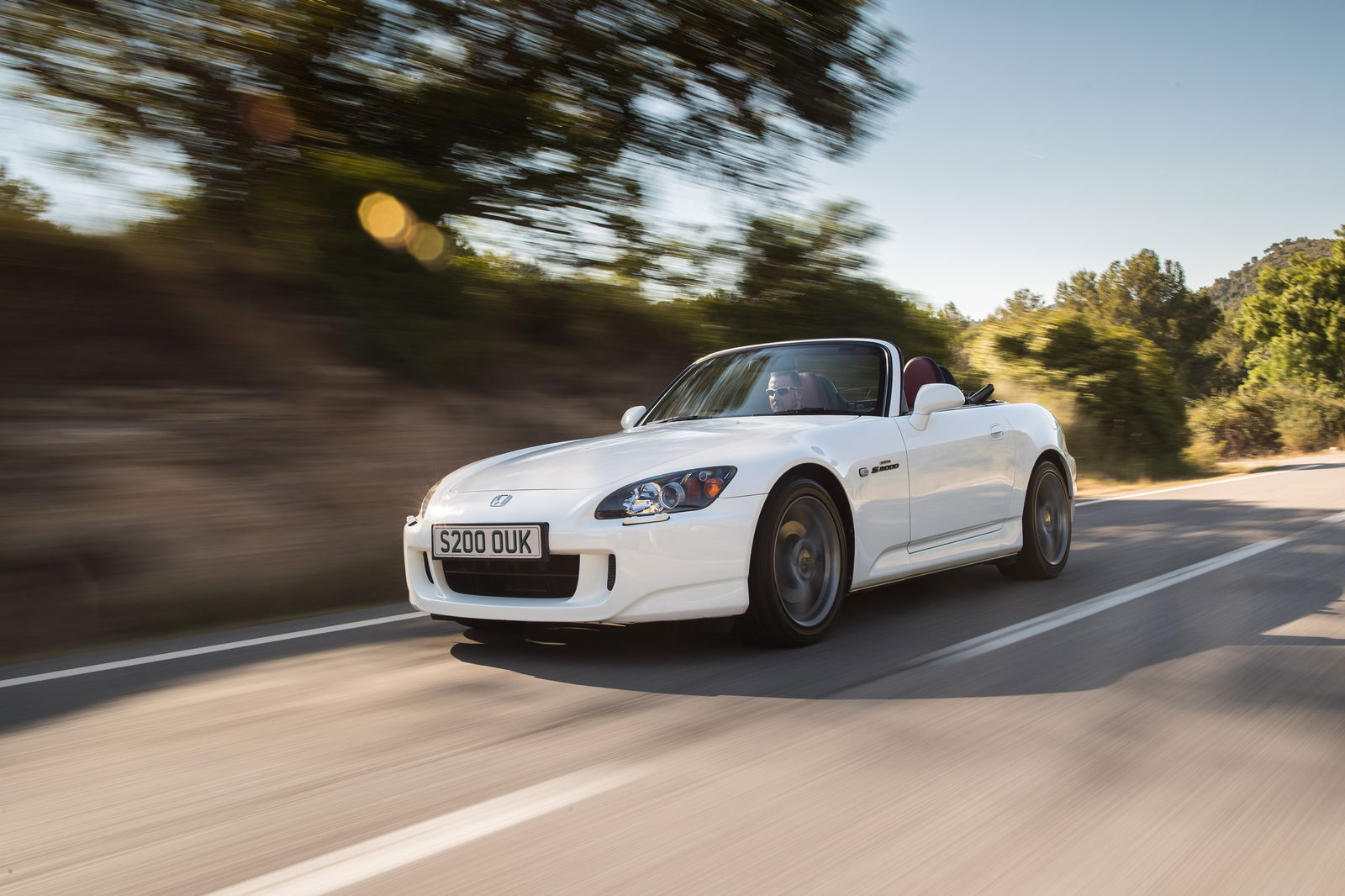The Toyota Rav4 PHEV Is The Latest Dramatic Moose Test Failure
Despite the many advances in the realm of car handling over the years, the dreaded moose test is still something many vehicles just can’t hack. Take the Toyota Rav4 as an example - the closed hybrid version failed the test when trialled by Teknikens Värld not so long ago, and the ‘Prime’ plug-in hybrid derivative is described as “much worse”.
Tackling the swerving manoeuvre (sometimes alternatively referred to as the ‘elk test’) 42.3 mph/70kmh, the Rav4 PHEV oversteered wildly, with the Swedish publication reporting that the stability controls did not engage at all. The car was also leaning so heavily that the rim of the front driver’s side wheel was nearly kissing the tarmac.
The speeds were progressively lowered until the Toyota was able to scrape a pass, which it did at 39.1mph (63kmh). The test was run again at the 42.3mph target speed after a driver swap, with yet more sketchy oversteer.

The Rav4 was tested alongside a Volvo XC40 Recharge T4 and a Mitsubishi Outlander PHEV. Both of these failed too, but not anything like as dramatically as the Toyota. In its thoroughly detailed report, Teknikens Värld noted the questions it sent the Japanese company following the test failure. Here’s the key bit of the response from Toyota Europe:
“Following Teknikens Värld’s evaluation, we have replicated their Elk test, which includes an extreme obstacle avoidance manoeuvre, and have produced similar results.
As a countermeasure, we will now take steps to ensure that RAV4 Plug-in Hybrid can pass Teknikens Värld’s Elk test. In the meantime, we would like to reassure our customers that the RAV4 Plug-in Hybrid remains safe to drive.
However, in the spirit of continuous improvement, we will make this upgrade [to the electronic stability system, which is already on European, non-PHEV Rav4s produced from August 2020] available to all customers who would like it within the first quarter of 2021, and we will introduce the upgrade into mass production shortly afterwards.”
This isn’t the first time the company has deployed fixes to answer problems discovered in a Teknikens Värld moose test. The Hilux pick-up memorably failed it a few years back, which Toyota answered by changing the recommended tyre pressures for maximum loads while tweaking the electronic stability control.
It’s worth noting it isn’t only high-riding cars like SUVs and pick-ups that struggle with the moose test. A couple of weeks ago the Renault Zoe electric hatchback failed when tested by Teknikens Värld, and earlier this year the Toyota GR Supra only just passed when assessed by Spanish publication km77.com.


Comments
That is actuality pretty average for an SUV
I disagree with these heaf lines if a car flipped over as fid the orginal A class and several other suv’s then fail is a fail but these vehicles did not they remsin upright with majority of wheels on the ground. Yes they understeered and oversteered but ifvyou sre tsughtbto drive to a decent standard then you should be able to keep sufficient control. After all who is in control of the car. The computer or the driver.
Today driving skillsband abilities have been erroded by the relience on driver aids . We no longer think of driving as a highly skilled . People have become lazy and distracted these cars did not fail the test drivers fear that peopke no longer have the skills . People need to be taught to drive without aids as they need to have skill . Inhave ssid for a long time every driver should have skidpan test and have to learn to control a vehicle in a skid or slide.
As part of there learning. Driving should bern seen as a skill not a right.
Back the cars they are safe they did not roll as we move car be with skate board chassis people are going to have to be more aware as it like going back to body on frame which most drivers today will not have experienced with unibody and monocoque chassis
You know things get desperate on this website when they post a video of a Swedish news company testing a RAV4 at high speeds on a very complex turn.
I really wonder when autonomous cars come into sight in moose tests.